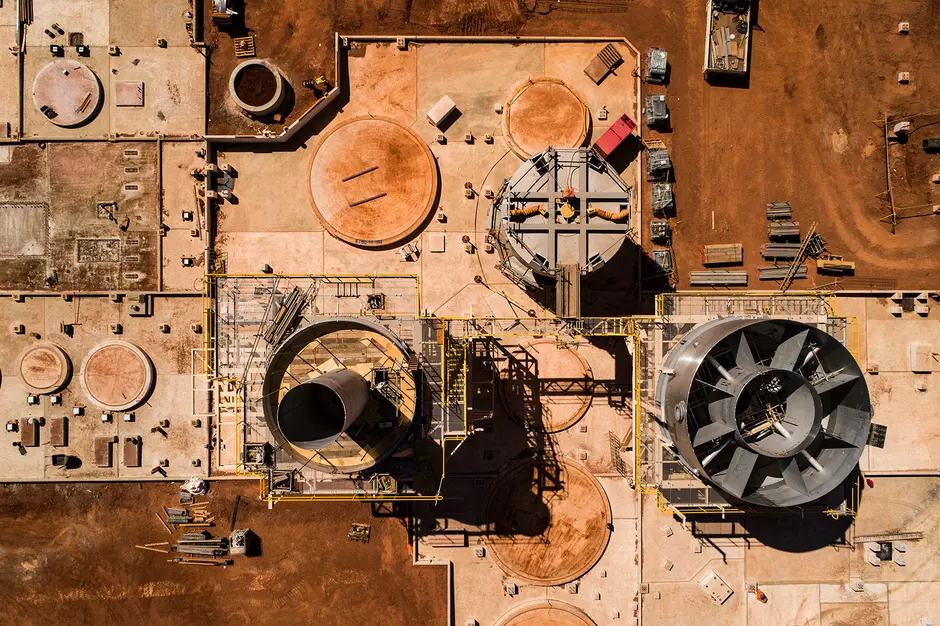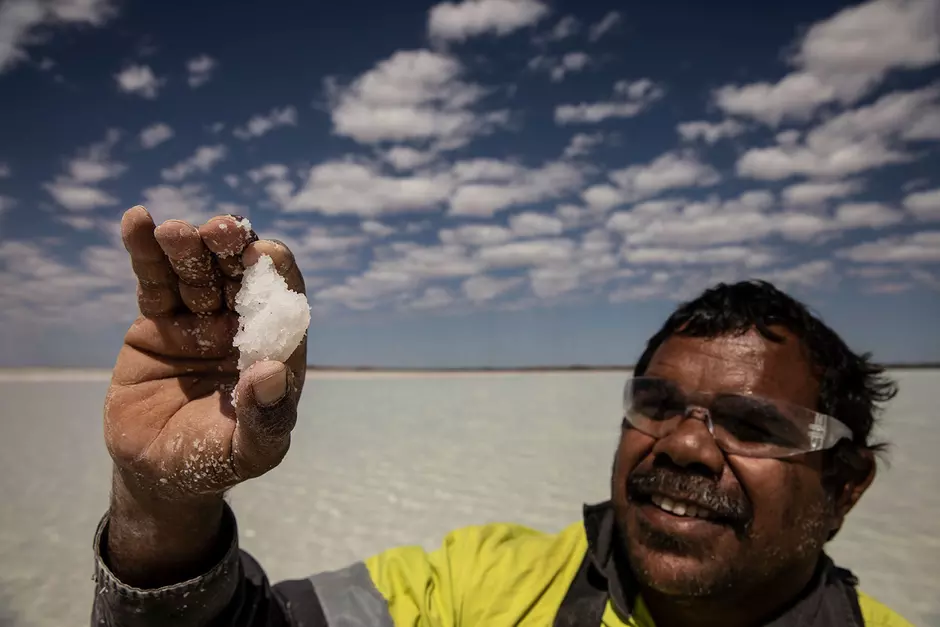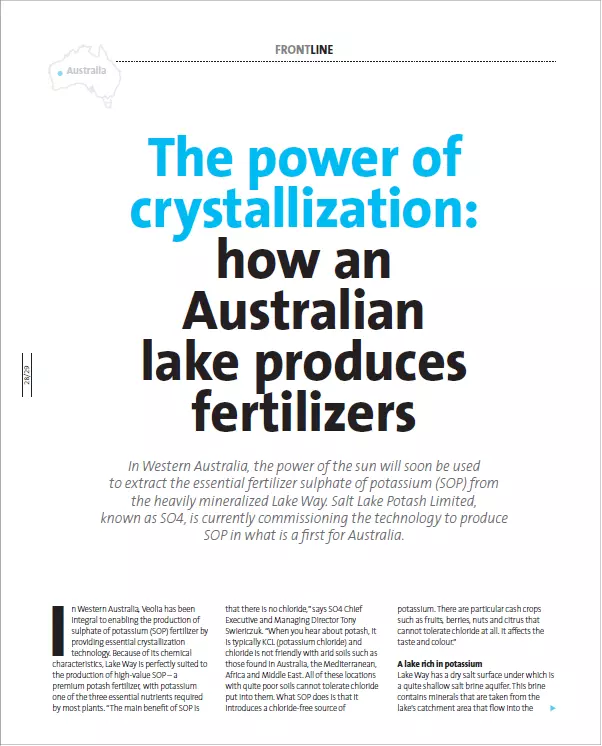The power of crystallization: how an Australian lake produces fertilizers
In Western Australia, the power of the sun will soon be used to extract the essential fertilizer sulfate of potassium (SOP) from the heavily mineralized Lake Way. Salt Lake Potash Limited, known as SO4, is currently commissioning the technology to produce SOP in what is a first for Australia.
In Western Australia, Veolia has been integral to enabling the production of sulfate of potassium (SOP) fertilizer by providing essential crystallization technology. By its chemical characteristics, Lake Way is perfectly suited to the production of high-value SOP – a premium potash fertilizer, with potassium one of the three essential nutrients required by most plants. “The main benefit of SOP is that there is no chloride,” says SO4 chief executive and managing director Tony Swiericzuk. "When you hear about potash, it is typically KCL (potassium chloride) and chloride is not friendly with arid soils such as those found in Australia, the Mediterranean, Africa and Middle East. All of these locations with quite poor soils cannot tolerate chloride put into them. What SOP does is that it introduces a chloride-free source of potassium. There are particular cash crops such as fruits, berries, nuts and citrus that cannot tolerate chloride at all. It affects the taste and color."
Lake Way is perfectly suited to the production of high-value SOP – a premium potash fertilizer, with potassium one of the three essential nutrients required by most plants.
A Lake Rich in Potassium
The chemistry at Lake Way is an aquifer brine under a dry salt lake surface and is quite shallow for an aquifer. Within this brine are minerals that are taken from the lake’s catchment area that flow into the basin over millions of years – for Lake Way this has meant that it is especially rich in potassium that is ripe for extraction. “The technological process used here involves paleochannel bores that are shallow in the lake and extract brine,” adds Tony Swiericzuk. “It flows into a trench network that is currently 65km long and will be extended to 95km eventually. The surface layer of the aquifer soaks into those trenches, which are a seepage collection channel and also a transportation pathway for bore brine. The water from the lake basically works its way to sumps around the solar evaporation ponds. Those sumps then pump the aquifer brine into the ponds. Over several months after you transport the brine around the ponds and transfer it into downstream cells, under the hot sun, the concentration of brine gets higher and higher as the water evaporates off.” Eventually, a vast majority of the contaminant salts, sodium chloride (NaCl), are removed and this is the plant feedstock. From there, it goes through various phases to remove other contaminant minerals and to beneficiate it, before reaching the crystallization phase. It is at this point that Veolia comes in.
Veolia had the expert understanding of the solubility characteristics, dissolution of the salts and all those areas where it has made a name for itself in crystallization, says Tony Swiericzuk, CEO of SO4.
Veolia’s crystallization technology

Following a competitive tender process, Veolia was selected by SO4 to provide the crystallization plant. Using Veolia’s proprietary HPD crystallization technology, the SOP solution will be turned into a water-soluble crystal product that is ready for bagging and sale. “To convert the harvest salts to premium grade SOP, Veolia designed an HPD® SOP crystallizer to grow and purify potassium sulfate crystals, and a second crystallizer to produce secondary Schoenite salts recovered from the recycled SOP mother liquor. These salts are then recycled and combined with Primary Schoenite salts and fed to the SOP crystallizer to maximize potassium yield", indicates Jim Brown, Executive Vice President of Veolia Water Technologies Americas.
“Veolia had the expert understanding of the solubility characteristics, dissolution of the salts and all those areas where it has made a name for itself in crystallization,” says Tony Swiericzuk. “They outperformed competitors with solubility tests in Chicago and determined the process conditions to maximize the product recovery. Veolia did a great job understanding the process flows and really nailed it. HPD is the crystallizer. It is at the heart of the process and is essential to overall production quality. Without getting this right and getting the recoveries right, and the solution management right, we are in trouble. HPD produces our end product.” SO4 is working hard towards being ready for production of SOP by the end of May 2021, with sales of the fertilizer due to begin as soon as possible after. It expects to deliver 245,000 tons of SOP per annum when in steady state production. SOP is generally considered a higher quality source of potassium, compared to the lower quality KCL – the latter being the largest source of potassium around the world.
Global Sales of SOP

Through six distribution partners, it aims to supply 92% of its product to 60 countries around the globe with the remaining 8% being used for spot and Australian trade. Currently, most seaborne traded SOP comes from Belgium and Germany, but this will provide more supply on the market, with use of SOP growing each year by 3-4%. In particular, South East Asian and Australian customers will have a closer source of SOP than previously. While all of the focus at the moment is on completing the Lake Way project, Tony Swiericzuk has ambitions to introduce the technology to other SO4 lakes in the region. He says: “We’ve got nine lakes in the Goldfields region. I see Goldfields as a multi-lake SOP province. I can see Goldfields in Western Australia being known globally as a provider of high-quality SOP.” But in a matter of weeks, SO4 will be producing its high-quality SOP fertilizer from Lake Way, and it is being produced thanks to the assistance of Veolia’s technology. As a result, before long, you could be eating tasty fresh citrus fruit, berries or nuts, that have been nourished with Lake Way-produced SOP fertilizer.
Contact us to discuss our HPD evaporation and crystallization technologies



